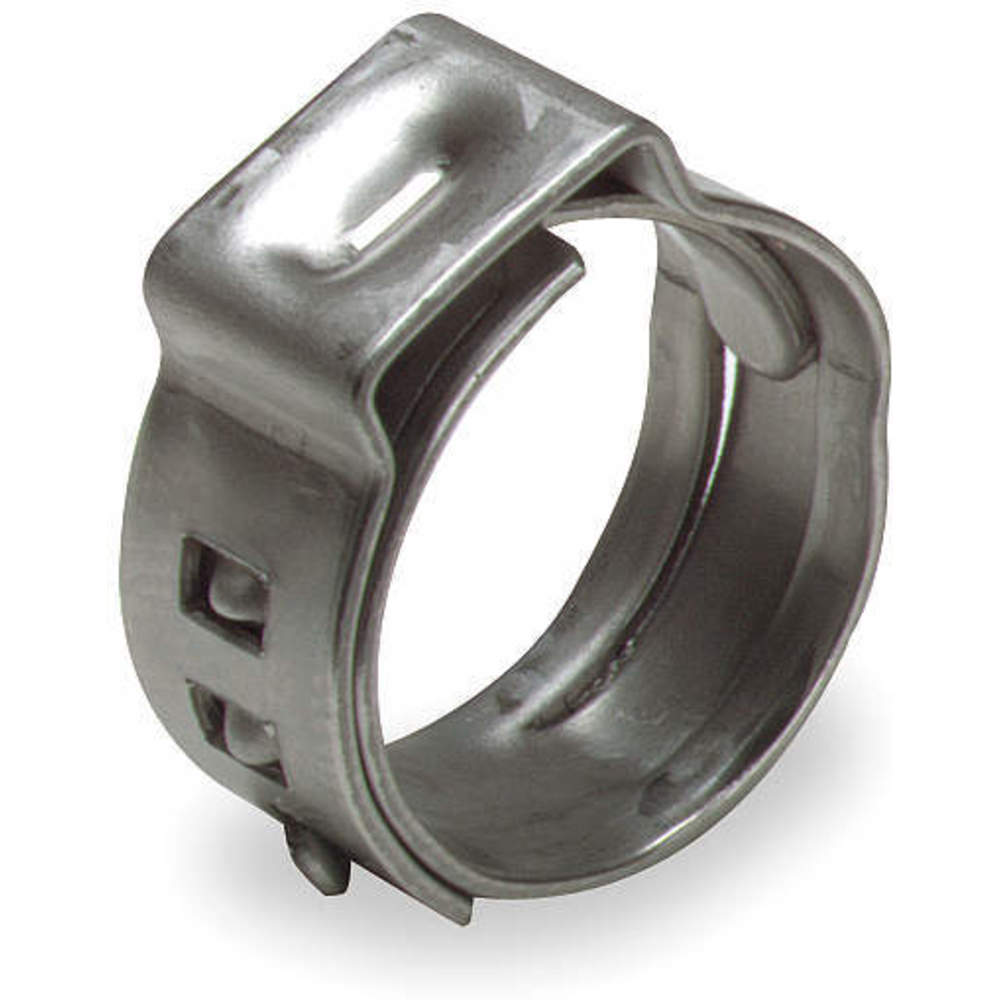Oetiker 16700017 hose clamp is ideal to prevent leaks and accommodate temperature changes or system vibrations. This StepLess ear clamp ensures tight connections in applications like coolant systems, hydraulic lines and pneumatic systems, maintaining airtight and fluid-tight integrity.
Working Mechanism:
- Oetiker's 16700017 StepLess one-ear hose clamp features a tongue-in-groove design and a narrow band that evenly transfers clamping force.
- The clamp is to be mounted on a hose equipped with a hose stem.
- Close the clamp ear completely (Note: a perfect seal and proper installation are dependent on the ear's accuracy).
- Hold it parallel to the hose clamp using standard or side jaw pincers.
- After the hose is securely attached to the mating part, position the hose clamp toward the end of the hose, leaving approximately 1/4 inch space between the clamp and the end of the hose.
- To release the StepLess clamp, grip the end of the band via pincers and pull it off.
Features:
- This hose clamp has a 360-degree StepLess design, ensuring a uniform seal without gaps or steps on the inner circumference.
- It comes with a narrow band and concentrated seal compression for effective sealing without compromising pressure integrity.
- This StepLess ear clamp has specially formed strip edges for reducing the risk of damage to the clamped part during installation.
- It has stainless steel construction with plain finish, offering enhanced resistance to corrosion and optimal sealing and airtight connections in various applications.
Compatible Accessories:
- Oetiker 14100280 Ratchet Pincer: These lightweight, professional grade tools have 3 handles for easy single-handed use and portability. They feature forged steel construction to ensure tensile strength and come with insulated grips for user comfort & safety.
- Oetiker 14100069 Ratchet Pincer: These ratchet pincers have 2 handles and are designed in compliance with ASTM F2098 specifications to be used at both low & high temperatures.
Standards and Approvals:
- ASTM (American Society for Testing and Materials) F2098
- NSF (National Sanitation Foundation)
Frequently Asked Questions:
Q. How do you remove an Oetiker clamp?
A. Tools like a rotating / bull nose / side cutter can be used for removing Oetiker 16700016 clamp. We don't recommend using rotating cutters as they might tamper or damage the hose while cutting the clamp.
Q. How to measure the size of an ear clamp?
A. Analyse and measure the hose's outer diameter (OD) while it is installed on the fitting. Select a hose clamp so that the outer diameter of the hose is approximately in the middle of the clamp's clamping range.
Q. How do we tighten a StepLess clamp?
A. To tighten a clamp, squeeze the clamp with one hand so that the end opposite the driver slides into the sleeve holding. Then, turn the driver clockwise with a wrench or screwdriver so that the threads present on the driver engage the slots on the clamp. Continue turning the driver until the clamp securely tightens around the hose.
Q. How to determine the correct Oetiker stepless ear clamp for my application?
A.
- Measure the outer diameter of the hose or tubing you intend to secure with the clamp.
- Match your measured diameter to the corresponding clamp size on the chart provided by Oetiker.
- Consider the specific requirements of your application and factors such as the pressure to withstand, the material of the hose or tubing, and temperature variations.
- Choose a material and finish aligning with the environmental conditions of your application.
- Ensure that the clamp size accommodates manufacturing variations in hose or tubing diameter.
- Make sure that the chosen clamp is compatible with fittings and connectors in your application.
- Ensure that you use appropriate tools for installation perform a trial installation to ensure that the selected clamp size meets your application's requirements.
- Reach out to Oetiker's technical support for guidance if you have any uncertainties.
Q. How do I maintain this Oetiker 16700017 stepless ear clamp?
A. Regularly inspect the clamp for signs of wear, rust or deformation. Replace any damaged or worn-out clamps to ensure a reliable and secure connection.
Q. What are the factors to consider while installing this clamp?
A. Ensure that the clamp size matches the hose diameter and fitting. Proper installation pressure is crucial for an effective seal without damaging the hose or fitting.
 Change Country
Change Country

 Trade pricing is available for
Trade pricing is available for  Order Value should be £500+
Order Value should be £500+